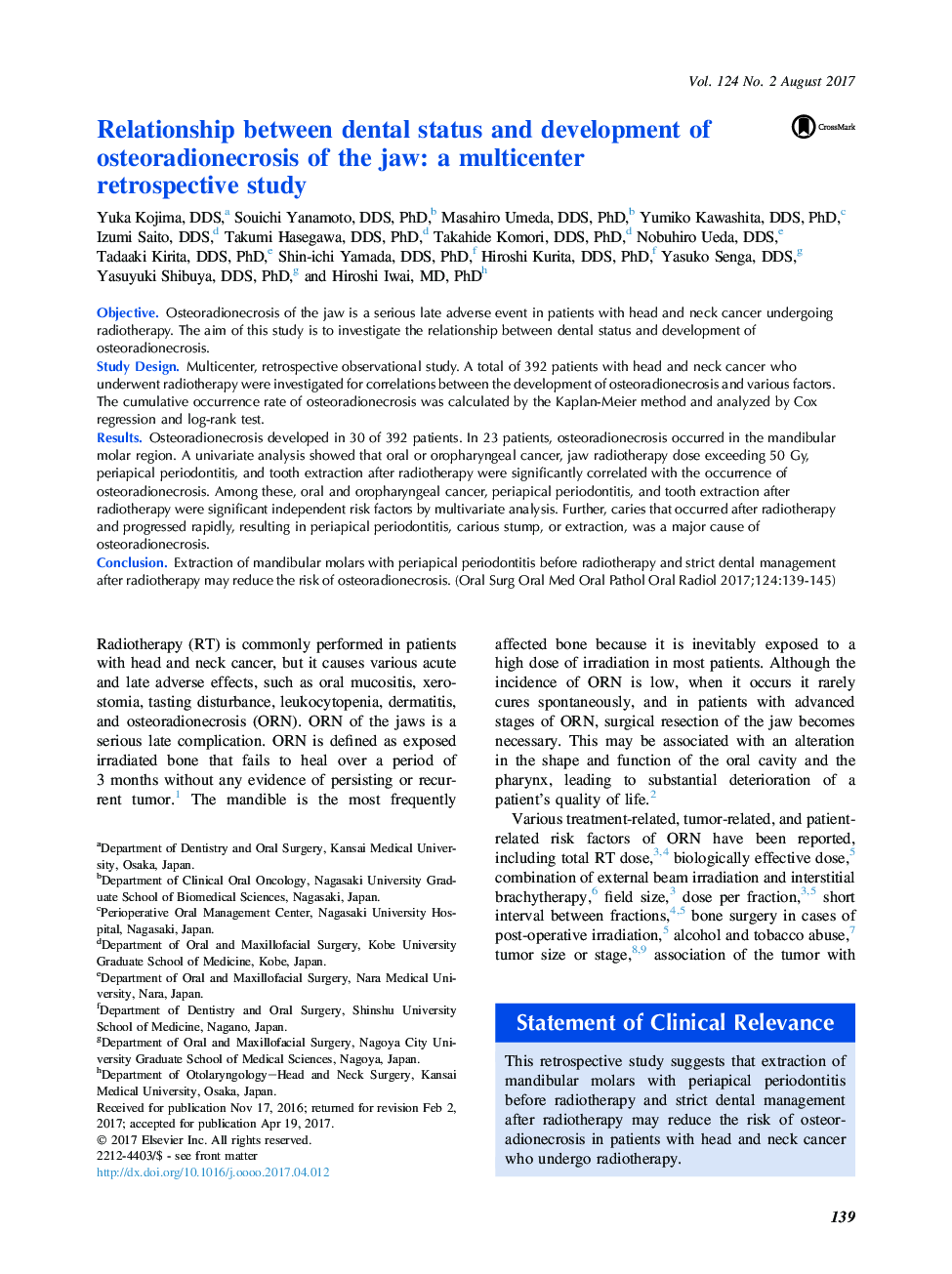| Article ID | Journal | Published Year | Pages | File Type |
|---|---|---|---|---|
| 5642802 | Oral Surgery, Oral Medicine, Oral Pathology and Oral Radiology | 2017 | 7 Pages |
ObjectiveOsteoradionecrosis of the jaw is a serious late adverse event in patients with head and neck cancer undergoing radiotherapy. The aim of this study is to investigate the relationship between dental status and development of osteoradionecrosis.Study DesignMulticenter, retrospective observational study. A total of 392 patients with head and neck cancer who underwent radiotherapy were investigated for correlations between the development of osteoradionecrosis and various factors. The cumulative occurrence rate of osteoradionecrosis was calculated by the Kaplan-Meier method and analyzed by Cox regression and log-rank test.ResultsOsteoradionecrosis developed in 30 of 392 patients. In 23 patients, osteoradionecrosis occurred in the mandibular molar region. A univariate analysis showed that oral or oropharyngeal cancer, jaw radiotherapy dose exceeding 50Â Gy, periapical periodontitis, and tooth extraction after radiotherapy were significantly correlated with the occurrence of osteoradionecrosis. Among these, oral and oropharyngeal cancer, periapical periodontitis, and tooth extraction after radiotherapy were significant independent risk factors by multivariate analysis. Further, caries that occurred after radiotherapy and progressed rapidly, resulting in periapical periodontitis, carious stump, or extraction, was a major cause of osteoradionecrosis.ConclusionExtraction of mandibular molars with periapical periodontitis before radiotherapy and strict dental management after radiotherapy may reduce the risk of osteoradionecrosis.
